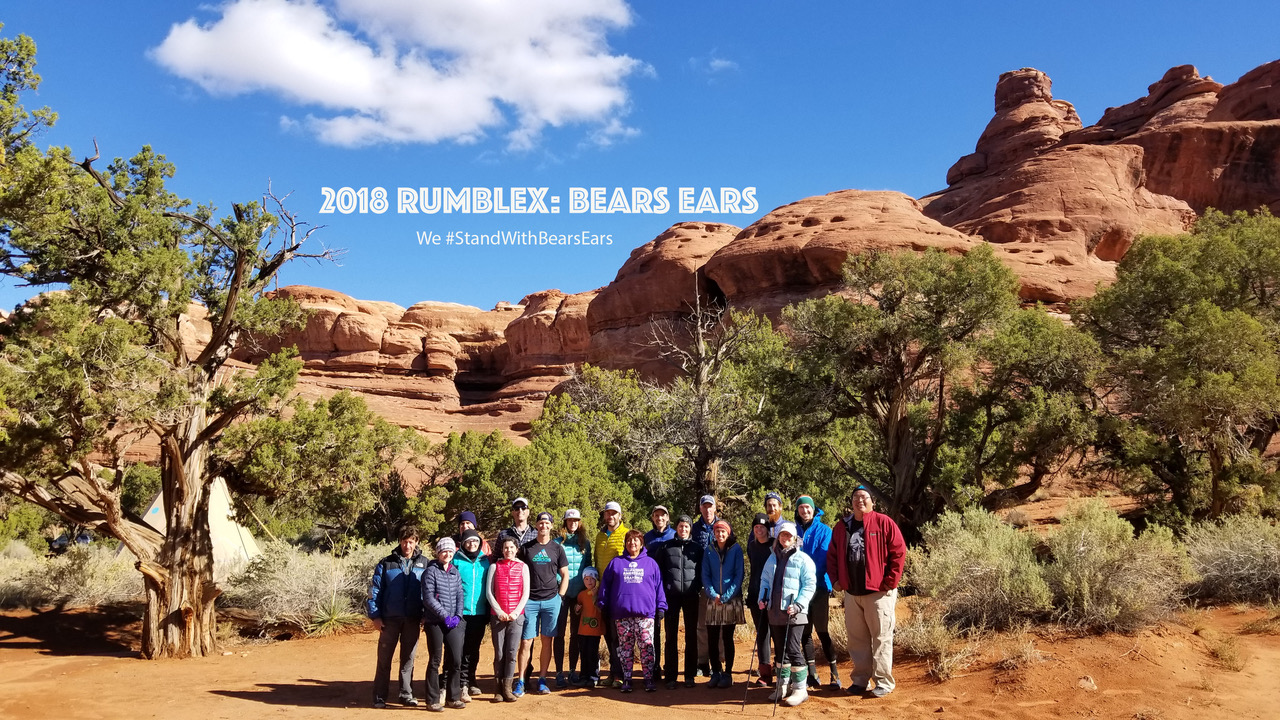Canyon Rumbles

RumbleX, the annual Conservation in Motion gathering, began with a climb and a prayer. On October 12, after a small party, led by Kahtoola founder and owner Danny Giovale, scaled South Six Shooter in Indian Creek area southwest of Moab, a larger group of conservation-minded adventure athletes assembled at Needles Outpost Campground, next to famously spectacular Canyonlands National Park. Brian Monongye, founding organizer of Bears Ears Prayer Runners Alliance, prayed in his native Hopi tongue and in English for the place that he and other tribal leaders, runners, and fellow conservationists have and continue to help protect: Bears Ears National Monument in the heart of Canyon Country in southeast Utah.
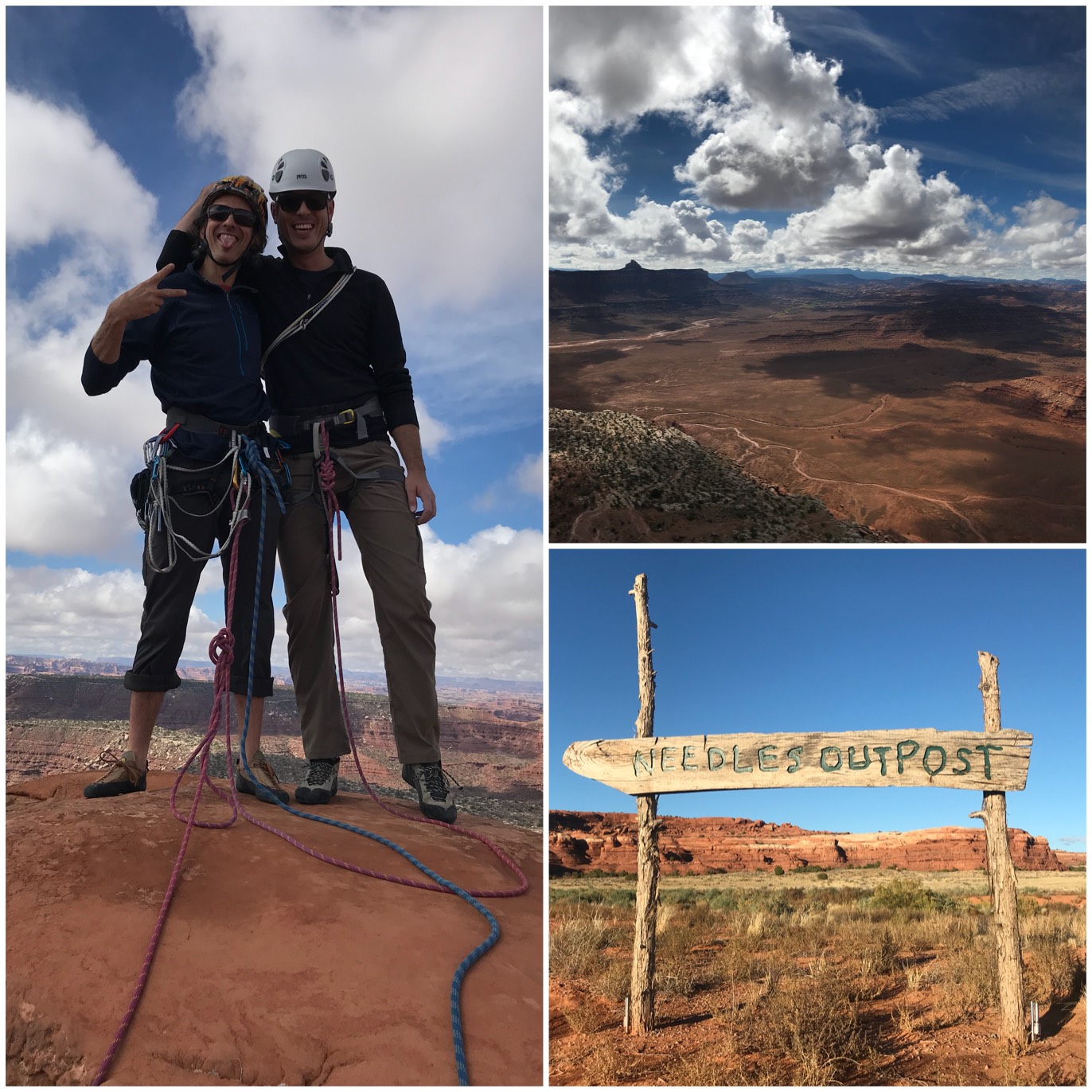
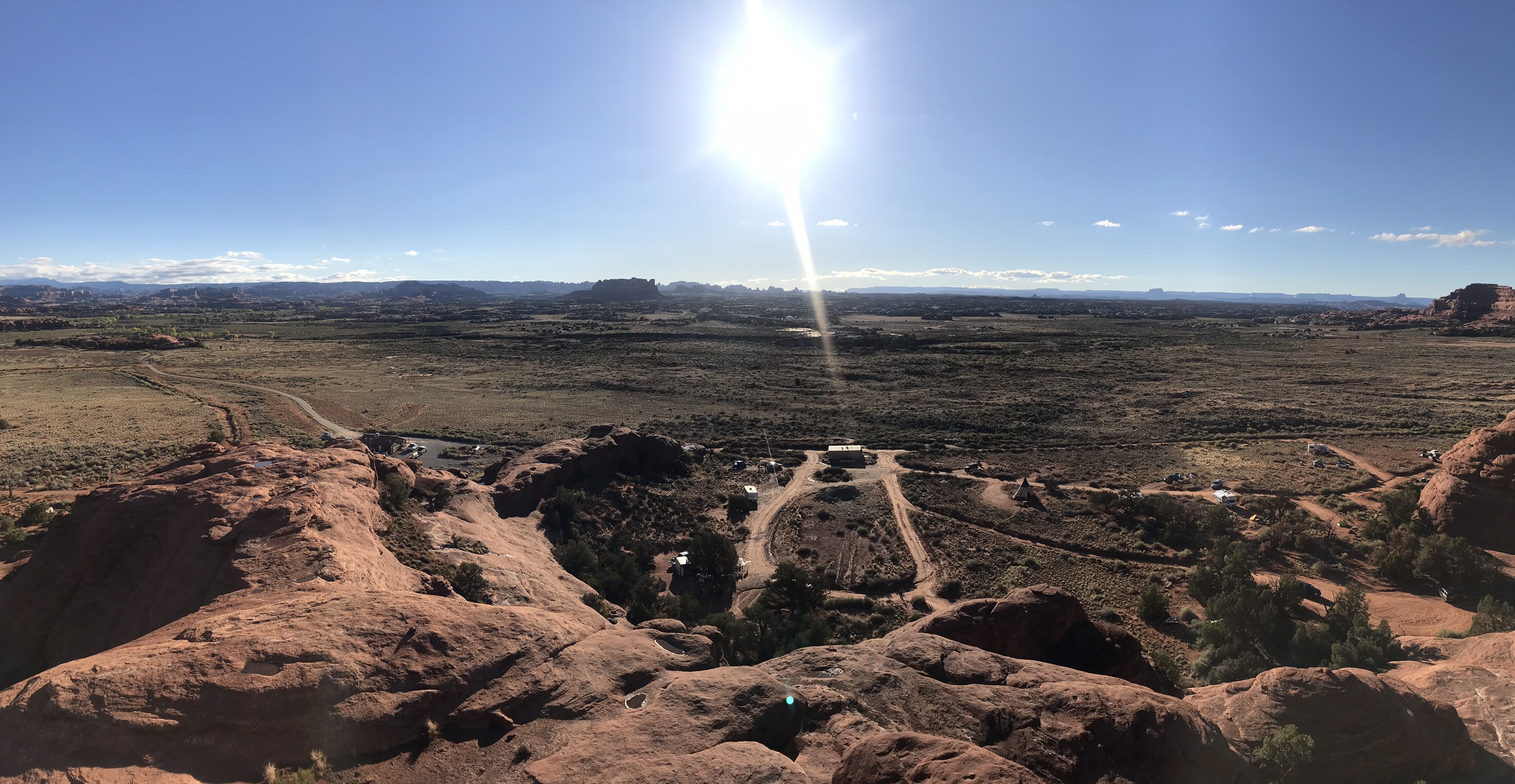
We were 40 conservation athletes and naturalists and activists, gathered to share stories and lessons on exploring and defending wild places, particularly here now in southern Utah, where Bears Ears and Grand Staircase-Escalante National Monuments are being slashed by a hostile administration. Brian’s gentle prayer was followed by a story from his younger colleague Jasmine Felipe, describing how she’d become a prayer runner for her people’s sacred lands and reading the statement she’d submitted on behalf of Bears Ears as a youth delegate to the United Nations Permanent Forum on Indigenous Issues.
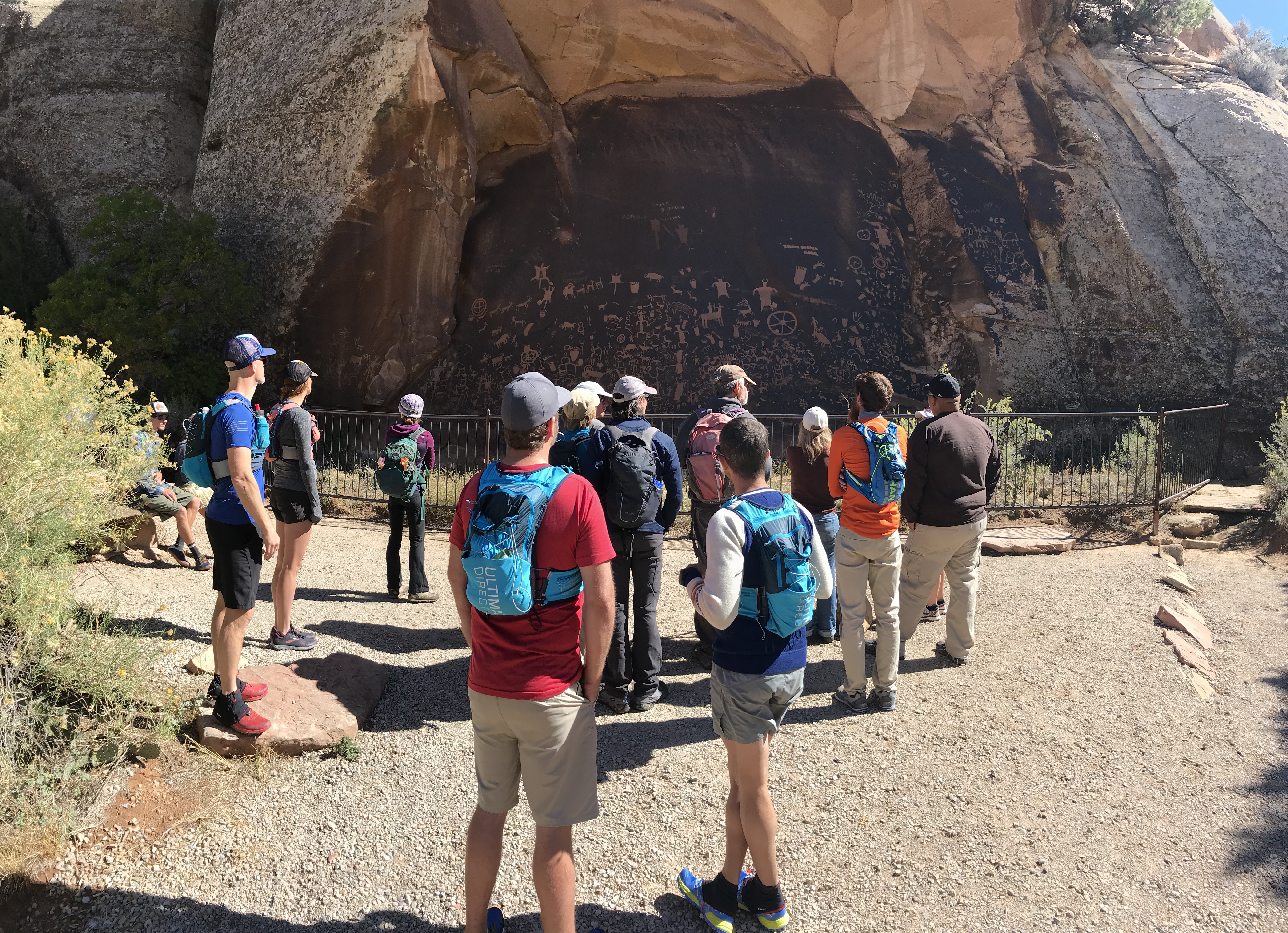
The next day, ecologist Larry Stevens added science to spirit in the case for protecting southern Utah’s greatest monuments and as much as possible of the Colorado Plateau. Larry urged us to feel with our feet—even as we do on a long run or hike—and thus perceive not only the current ground on which we stand but also the billions of years of history beneath us, displayed more pristinely in the Grand Staircase from Arizona’s Grand Canyon north through Utah’s Canyon Country than anywhere else on Earth. Larry then led the day’s hikes to the Newspaper Rock petroglyphs, where Brian interpreted many of the timeless figures for us, then to Indian Creek, to assess the riparian area. As on much of BLM land, damage from livestock was painfully evident, but if this land can be kept in the national monument, conservationists will have the opportunity to help reduce livestock impacts and commence restoration.
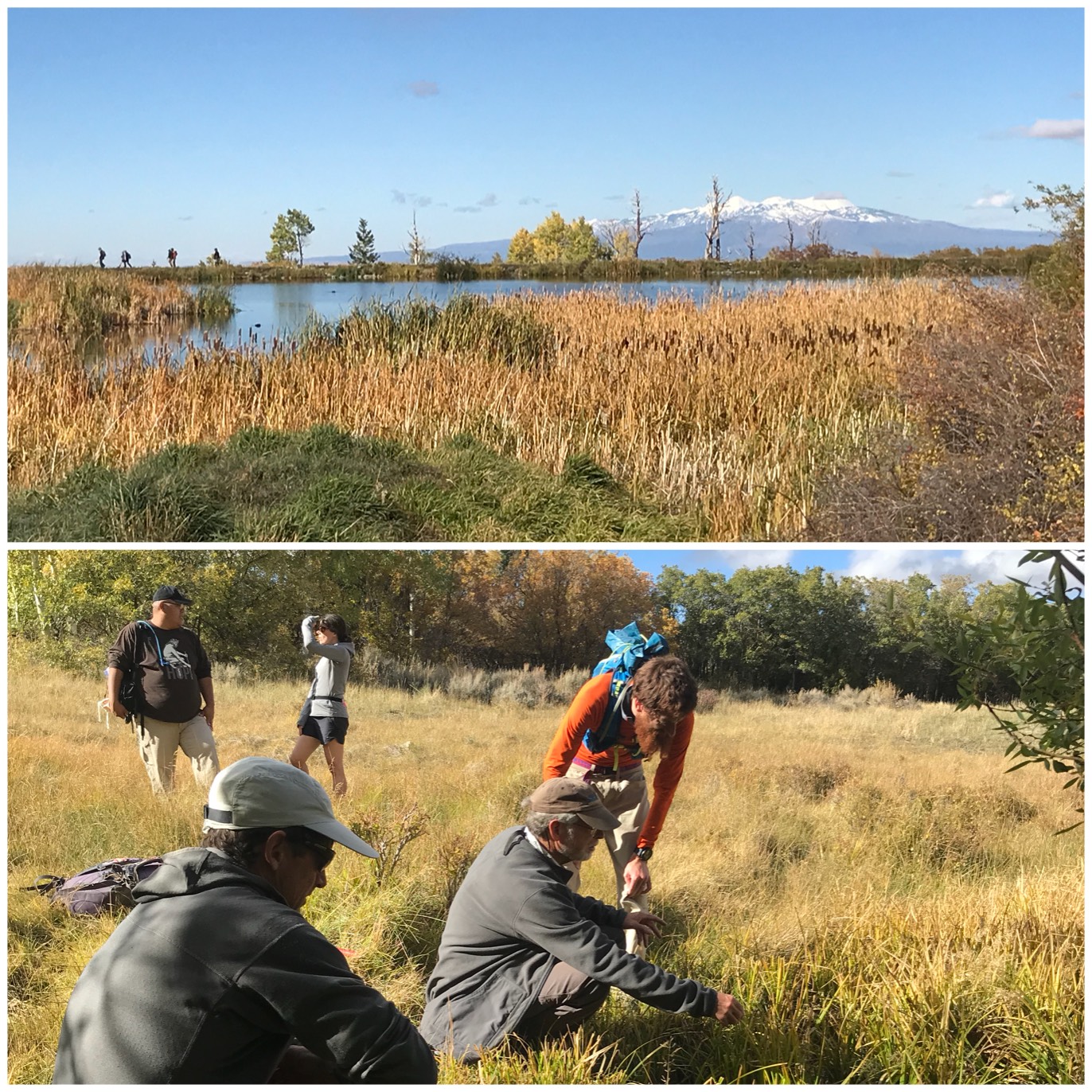
Larry then led us to a source spring for Spring Lake on the north side of Abajo Mountains, where we measured flow and temperature and identified macro-invertebrates, who tell much about a spring’s health. Larry and his wife, Jeri Ledbetter, direct the Spring Stewardship Institute at the Museum of Northern Arizona in Flagstaff, AZ, to work with land-owners, land management agencies, tribes and conservationists to document freshwater spring conditions, inventory species (many of which at springs are rare, endangered, or even endemic), and protect them from livestock trampling, mining, and other deleterious uses.
Our group’s next teacher was Regina Lopez-Whiteskunk, Ute Mountain Ute leader who inspired President Obama to recognize the sacredness of Bears Ears buttes and surrounds and establish the nearly million-and-a-half-acre national monument. Regina impressed upon us the urgent need to work together—tribes, athletes, scientists … all who care about America’s public lands—to save Bears Ears and Grand Staircase-Escalante National Monuments.
A complementary sort of inspiration came from young bicycle adventurers Maleea Ezekiel and Flynn McFarland of Pedal2Protect (Instagram: @pedal2protect). They cycled there from Colorado through the stormiest period in months, to share field reports and tell us of their next 2,000 miles of riding to raise money and awareness for imperiled public lands.

That autumn evening, beneath brilliant stars (some shooting!), Hopi-Tewa musician, artist and songwriter Ed Kabotie punctuated his powerful songs with stories showing how exploitation of native peoples and wild lands are historically intertwined. Ed is the founder of Flagstaff’s annual Rumble on the Mountain concert to raise awareness of the plight of the people and lands of the Colorado Plateau. The Rumble was seeded by an earthquake that shook the nearby sacred San Francisco Peaks, and in turn has inspired the name of our Conservation in Motion gathering.
Sunday morning, as we dried out from an unexpected night-time thunderstorm, Jackie Feinberg, Senior Associate of U.S. Public Lands at The Pew Charitable Trusts, updated us on the Trump administration’s plans to drastically down-size Grand Staircase-Escalante National Monument, over the objections of tribes, recreationists, conservationists and local businesses. Jackie and others at this gathering would testify at public hearings in the coming days.
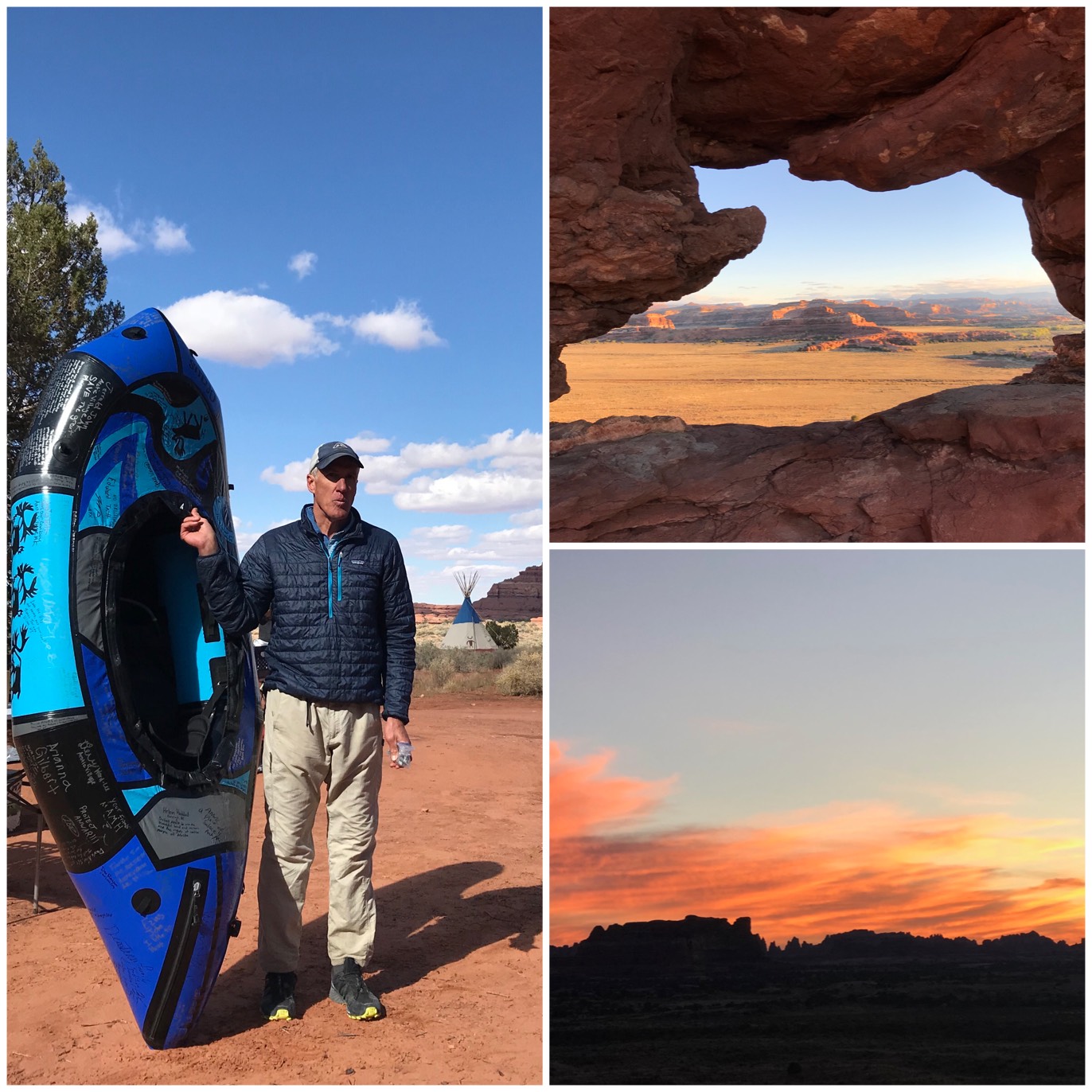
Then American Packrafting Association co-founder and Alaska wildlands explorer Brad Meiklejohn carried us north to the Arctic National Wildlife Refuge, to tell us how we might protect it from oil and gas drilling. Brad invited us all to sign the “petition packraft,” dubbed “Olaus” in honor of the late Far North wildlands champion Olaus Murie (his partner raft, “Mardy,” on another conservation mission), which will soon join a flotilla of boats descending the Potomac River and demanding permanent protection for all of Arctic Refuge.
We closed the meeting with vows to stand together for the new monuments and all public lands. Then, off in four directions we journeyed—some of us deeper into Canyon Country, some to public hearings, most plotting wider explorations to gather words and images on behalf of our country’s precious but imperiled public lands.
John Davis, Rewilding Earth editor (www.rewilding.org) and wildways trekker (Instagram: @wildwaystrekker)

